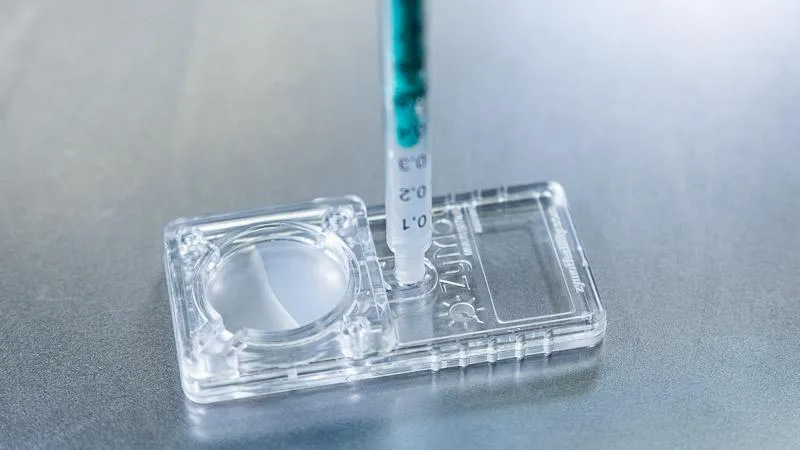IVF Academy Blog
Cutting edge publications and research
from the IVF Academy Team.

Optimize the Utilization 3 ml Zymot Microfluidic Sperm Device
Objective:
Current protocols for the 3 ml Zymot device is to remove 1.0 ml of the culture media. This equates to 40% of the original volume utilized in the procedure. While the 850 µl Zymot device has 67% of the 750 µl utilized. This study will establish comparable volumes between the 3 ml device in similar percent volumes established in the 850 µl device to optimize sperm recovery. These data will be compared to the percent recoveries associated with the 850 ul device.
Materials & Methods:
A total of 35 samples were evaluated for initial concentration, motility and total motile. Sperm was prepared through the 3 ml Zymot microfluidic device according to the manufacturer protocol for the samples where less than 3 ml, additional sperm wash media was added to the semen sample. Three ml of the semen sample was placed under the membrane followed by 2.5 ml of sperm wash media above the membrane and incubated for 30 minutes. Following incubation, the recommended protocol, 1.0 ml was removed from the sample port and evaluated the concentration, motility and total motile. An additional 0.5 ml was removed for a total of 1.5 ml or 60% of the sperm wash volume. Data were evaluated for percent recovery of the total motile from the original sample. A one tailed students T-Test was utilized to determine statistical significance. An additional 20 samples evaluated in the 850 µl device where 500 µl of the 750 µl was removed and evaluated for the same parameters.
Results:
Sperm concentrations ranged from 3 million per ml to 215 million per ml and motility ranged from 28% to 91% motile with an average of 115 total motile across the 35 samples evaluated. The first 1.0 ml sample resulted in an average of 10% recovery of the total motile sperm from the original sample. Concentration ranged from 0.1 to 65 million per ml. An additional 0.5 ml was removed and added to the original 1 ml and re-evaluated for Concentration, motility and total motile. There was a significant improvement (P<0.05) in recovery with the additional 0.5 ml with an average of 23% recovery. Sperm concentrations in the 1.5 ml samples ranged from 0.2 to 85 million per ml. Of the 20 samples evaluated from the 850 µl device resulted in 13% recovery rate with a range of 2 to 18 million per ml.
Conclusions:
This study has shown that the additional 0.5 ml removal for a total of 1.5 ml or 60% of the original volume significantly optimized the recovery rate of the 3 ml device. When evaluating the 850 and the 3 ml device with only 1 ml, the 10% and 13% recovery rates are very similar respectively. Utilizing the 3 ml device permits the user to use the whole sample thereby maximizing the overall recovery of the sperm available for treatment.
Impact Statement:
Zymot has been shown to continually provide the best quality sperm in all treatment cycles. The 3 ml device if utilized properly will maximize the benefit for patient care.
Affiliations:
EmbryoDirector IVF Academy, San Antonio, Texas, USA
